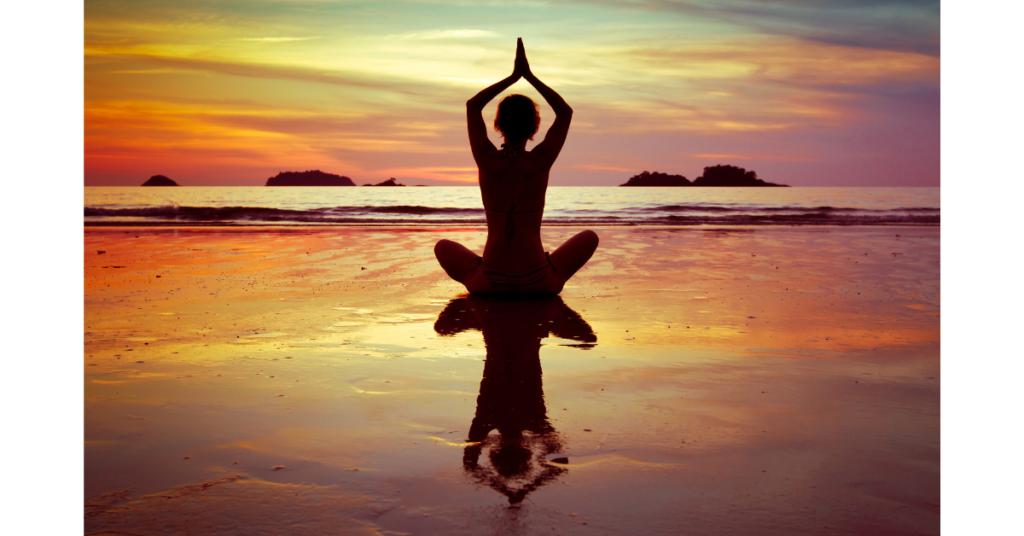Yoga
Yoga consists of a system of breathing techniques combined with physical and mental exercises that not only keep you supple and in good physical working order, but also instil a sense of tranquillity and peace. Yoga ‘massages’ the internal organs, regulating everything from the metabolism to the hormonal system.
This document provides general information on what to expect when you visit a teacher, as well as explaining briefly how the discipline works. It must be noted, however, that every teacher works in an individual way, and may subscribe to slightly different theories as to how the practice is carried out. It is always advisable that you ask to see relevant qualifications and discuss the treatment offered to you by the teacher if you are in any doubt whatsoever.
What is Yoga?
There are so many schools of yoga that it would be impossible to list them all in this article, however, put simply, yoga is a complete system of mental and physical training that can be enjoyed by anyone at any age. In its purest form, yoga incorporates meditation, diet, and certain standards of hygiene, and it is also said to offer a path to enlightenment. However, you don’t need to take on board the whole shebang in order to reap the benefits of this ancient practice. The yoga commonly practised today consists of asanas (body postures) and pranayama (breathing techniques). While many have heard of power yoga, otherwise known as Ashtanga yoga, the most popular form in the West is called Hatha (‘balance’) yoga.
According to yoga philosophy, a calm mind produces regular breathing and a relaxed body and vice versa. The physical postures (asanas) benefit both mind and body since one focuses on the breathing whilst holding the posture. You may have seen some yoga postures and wondered why you are required to hold your body in such strange positions. Well, it is in these positions that the organs and nerve centres of the body are stimulated. When the endocrine glands are stimulated this in turn affects the body’s heart rate and hormone production. Whilst performing a back twist the autonomic nerves are stimulated, as are the digestive and lymphatic systems. A headstand is said to improve circulation and stimulate the brain as well as giving the heart a rest. These are just a few of the many positions performed in yoga. Yoga claims to bring about spiritual benefits too as through correct breathing techniques and meditation you influence the flow of life energy (called prana) which flows through invisible energy channels called Nadi.
Main uses
Stress; fatigue; menstrual problems (including PMS); back pain; stress related conditions such as anxiety, depression, and insomnia; circulatory disorders; respiratory disorders such as asthma and bronchitis; back / joint pain and headaches / migraines.
What to expect when you visit a teacher
Most people join a class in order to learn yoga, although you will always be able to find teachers who will tutor you on a one on one basis. You will need to wear comfortable light clothing, but it is advisable to take a big jumper or a small blanket with you to cover yourself up while you are doing the relaxation exercises (these involve lying on your back concentrating on your breathing). Each class lasts from one to one and a half-hours. Yoga is performed in bare feet to prevent slipping, and the yoga class should also provide you with a yoga mat or you can buy your own (they aren’t too expensive and also have the advantage of being lightweight). Throughout all the postures you will be instructed on how and when to breathe in and out and you will also be encouraged to relax both mind and body.
A common sequence of gentle flowing moves called the Sun Salutation is often practised in class. This is a series of exercises that increase flexibility and strengthen the body, making for an excellent warm-up routine. It is important to remember not to push yourself too hard or too quickly – you should just go at a pace that suits you. We are so used to hearing the phrases “no pain, no gain” and “feel the burn” that we are inclined to push ourselves too hard or at the very least compete with others in the class. This is not in keeping with the philosophy behind this discipline.
It is always advisable that you attend a class as opposed to trying to learn how to do yoga from videotape. Videos and books are fine once you know a little about what you are doing but at the beginning you will need someone to correct any errors in your posture.
History (In Brief)
While the word yoga is generally translated as ‘union’, it is actually derived from the Sanskrit verb ‘to yoke’ or ‘to unite’. Yoga originated in India some 5,000 years ago, and it was traditionally practised by yogis, ascetics, and Hindus. Yoga was introduced to the West in the 19th century, the discipline having been translated from Hindu texts. It has grown in popularity since the 1960’s, and it is now to be seen on the timetable of most health clubs as well as receiving praise from a host of famous celebrities, including Madonna and Gwyneth Paltrow.
(See our article on Yoga Nidra)

